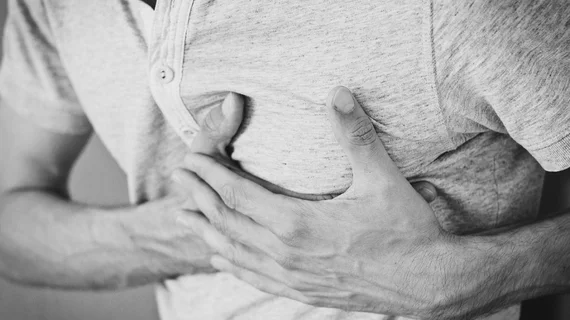Radiomics can predict major cardiac events using CCTA images
Researchers have developed a radiomics model that can assess plaque vulnerability based on coronary CT angiography (CCTA) images, which provides valuable insight into patients’ risks of cardiovascular events.
Details of the model were shared on Feb. 14 in Radiology.
Researchers developed the CCTA-based radiomics signature using 16 radiomic features—two related to shape and 14 to texture. The model was developed with data from 299 patients and tested with more than 700 patients who had suspected coronary artery disease.
Upon testing, researchers observed the model to be a good indicator of cardiovascular health, as individuals with a high radiomic signature were found to have increased instances of major adverse cardiac events (MACE) over a three-year follow-up period. The model achieved good to moderate AUCs in all datasets, including training, validation, internal and external test sets.
Experts involved in the study, including co-lead author Long Jiang Zhang, MD, PhD, from the Department of Radiology at Jinling Hospital in China, described the positive findings as “encouraging and exciting,” noting that the CCTA-based radiomics method was more accurate in identifying potentially problematic plaques than conventional CCTA anatomical parameters alone.
What’s more, the experts suggested that their model could be easily integrated into current clinical practices as a means of stratifying high-risk patients.
“If the radiomics analysis is embedded into the routine CT angiography workstation, it can automatically identify vulnerable plaques for clinician review,” Zhang said. “Thus, radiomics may significantly improve the accuracy and precision of high-risk plaque detection in routine clinical practice.”
In the immediate future, the team is working on developing a similar radiomics model from different scanners and vendors and is planning a multicenter study that will include 10,000 participants—something that they believe will validate the notion that radiomics-based approaches can play a significant role in clinical decisions and disease management.
The study abstract is available here, and an accompanying editorial can be found here.

